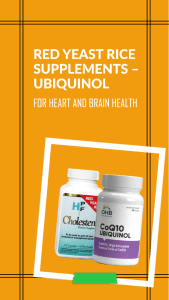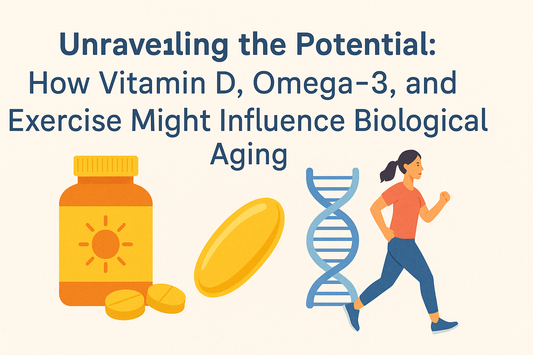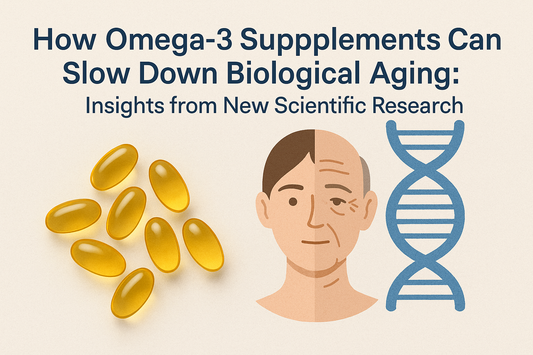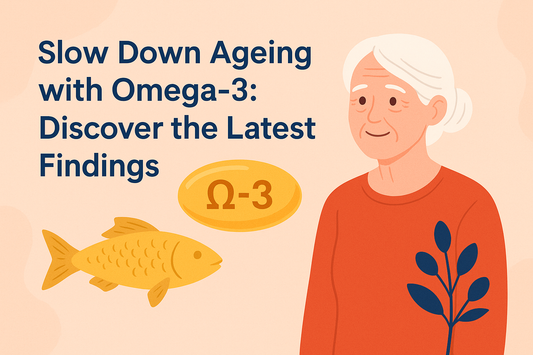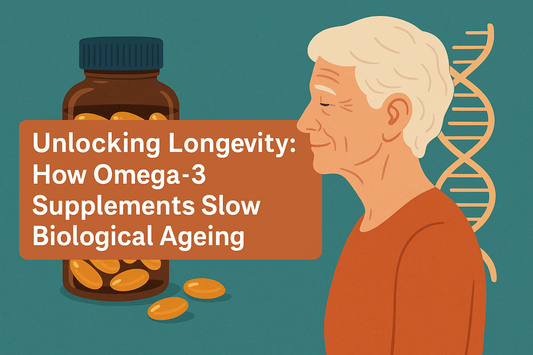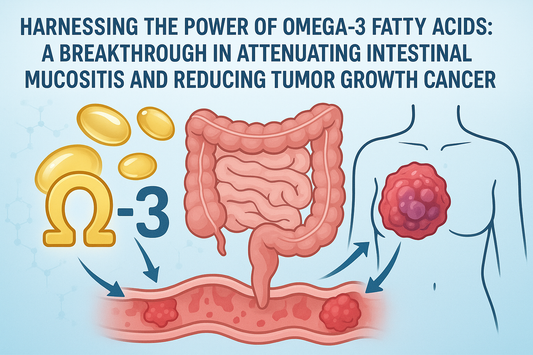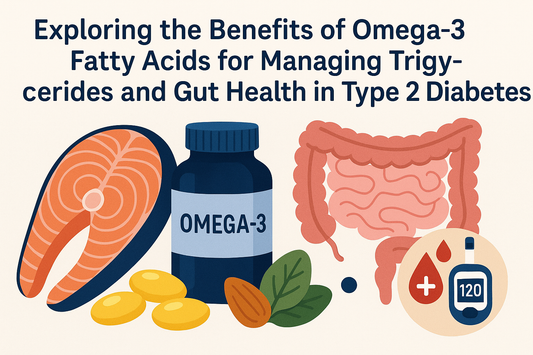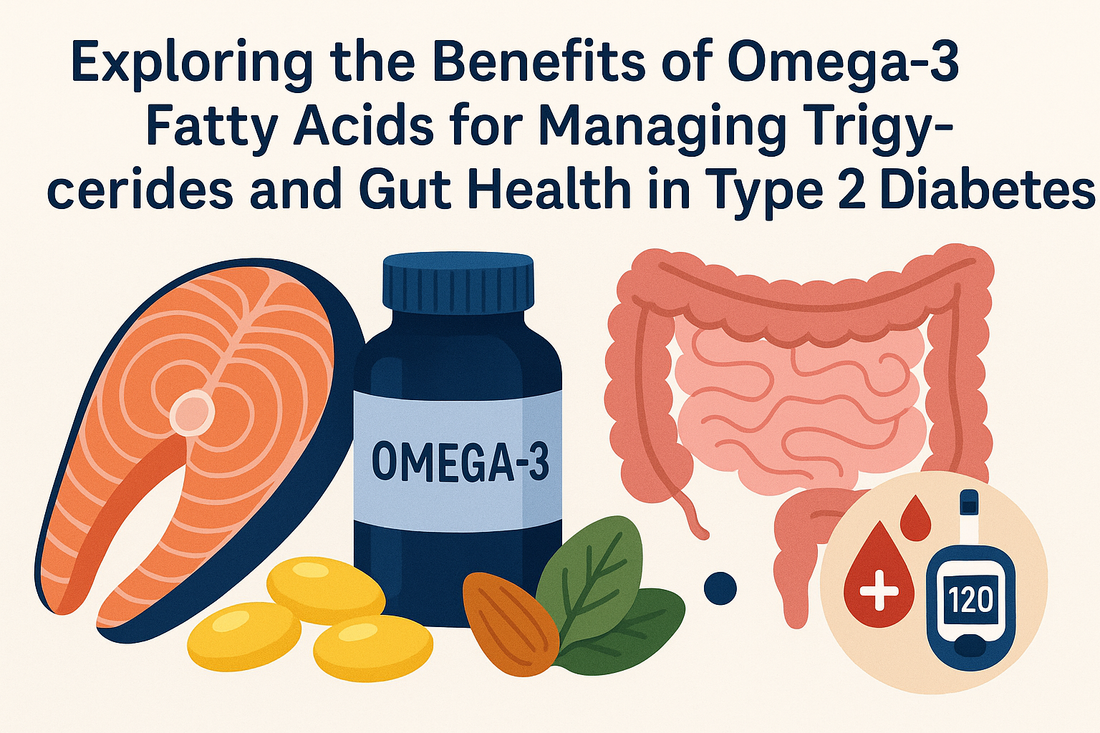
Share
Welcome to the Optimal Health Bridge blog! If you’re feeling overwhelmed by all the information about diabetes, you’re not alone. The good news? You don’t need a doctor’s degree—or an insulin pen—to understand today’s topic. We're talking about omega-3 fatty acids and how they can help manage triglyceride levels and improve gut health if you have Type 2 Diabetes.
Let’s dive in and see why omega-3s might become your new favorite health helper.
Introduction: Diabetes, Triglycerides, and Gut Health
Type 2 Diabetes (T2D) affects over 460 million people around the world. That’s more than the total population of the U.S., Mexico, and Canada combined! T2D happens when the body struggles to use insulin well, making blood sugar levels rise too high.
Two important parts of diabetes care are managing triglycerides (a type of fat in the blood) and taking care of your gut health. Luckily, omega-3 fatty acids—healthy fats found in certain foods—can help with both.
1. What Is Type 2 Diabetes?
Let’s imagine your body as a car. Glucose (sugar) is your fuel, and insulin is the key that opens the fuel door. In Type 2 Diabetes, the "key" doesn’t work well, or there aren’t enough keys. This leads to too much sugar floating around in your blood.
Here’s what usually happens in T2D:
- Insulin resistance: Your cells stop responding to insulin as they should.
- High blood sugar: Extra sugar can damage organs over time.
- High triglycerides: Too much fat in the blood adds more health risk.
- Gut problems: An unhealthy gut can trigger inflammation and worsen diabetes.
Controlling blood sugar is important, but focusing on triglycerides and gut health can make a big difference too.
2. What Are Omega-3 Fatty Acids?
Omega-3s are healthy fats that your body needs but can’t make on its own. They help your brain, heart, and many other parts of your body. There are three main types:
- ALA (Alpha-linolenic acid): Found in plant foods like flaxseeds, chia seeds, and walnuts.
- EPA (Eicosapentaenoic acid): Found in fatty fish and fish oil.
- DHA (Docosahexaenoic acid): Also in fatty fish, helps with brain health.
Here are some foods high in omega-3s:
- Salmon
- Mackerel
- Sardines
- Ground flaxseeds or flaxseed oil
- Chia seeds
- Walnuts
- Algal oil (great for vegetarians)
- Hemp seeds
- Canola oil
- Omega-3 enriched eggs
- Herring
- Anchovies
- Soybeans
- Cod liver oil
- Krill oil
Try mixing them into meals! How about salmon tacos with a flaxseed tortilla?
3. How Omega-3s Help Lower Triglycerides
Omega-3s can help lower the amount of triglycerides in your blood. Here’s how they work:
- Reduce the liver’s production of triglycerides.
- Help break down existing fats in the body.
- Stop the digestive system from absorbing too much fat.
Studies show that EPA and DHA can reduce triglycerides by 20% to 50%, depending on how much you take. That’s almost as good as some prescription medicines, and usually with fewer side effects.
Recommended amount: The American Heart Association suggests taking 2 to 4 grams of EPA and DHA each day to lower triglyceride levels. A good fish oil supplement can make it easy to get what you need—no need to eat fish every single day.
4. Omega-3s and Gut Health in Type 2 Diabetes
Your gut is full of good bacteria that help keep your body healthy. Keeping these bacteria strong is very important, especially if you have T2D. Here’s how omega-3s support gut health:
- Help grow good bacteria like Bifidobacteria and Lactobacillus.
- Reduce gut inflammation.
- Strengthen the gut lining to prevent "leaky gut."
- Lower harmful substances that cause inflammation.
- Help make short-chain fatty acids that improve insulin response.
- Support hormone balance between your gut and brain.
- Improve how your body switches between burning sugar and fat.
- Increase the variety of gut bacteria, which is a sign of health.
- Help prevent common digestive issues in diabetes.
- Improve absorption of key vitamins like A, D, E, and K.
In simple terms, a healthy gut helps the whole body work better.
5. Big Benefits of Omega-3s for People with T2D
Omega-3s play many roles in improving health for people with Type 2 Diabetes:
- Lower triglycerides and sometimes raise “good” cholesterol (HDL).
- Help cells become more sensitive to insulin again.
- Fight inflammation that can make diabetes worse.
- Protect your heart by lowering blood pressure and keeping heartbeats steady.
- Improve brain health and mood—helping with anxiety and depression.
- May slow down memory loss or other brain changes over time.
If omega-3s were superheroes, they’d be the team that fights for your heart, brain, gut, and more—all at once!
6. Easy Ways to Add Omega-3s to Your Diet
Here are some simple ideas for getting more omega-3s every day:
- Eat fatty fish like salmon or sardines 2–3 times a week.
- Add 1–2 tablespoons of chia or ground flaxseeds to smoothies or oatmeal.
- Use flaxseed or walnut oil on salads.
- Cook with canola oil instead of regular vegetable oil.
- Choose omega-3 enriched eggs.
- Snack on walnuts or a trail mix with omega-3-rich seeds.
- Use grass-fed butter, which has a small amount of omega-3s.
- If you’re vegetarian, try algal oil supplements.
- Use omega-3-packed spreads instead of margarine.
- Take a top-quality fish oil supplement to fill in the gaps.
At Optimal Health Bridge, we make sure our omega-3 supplements are clean, strong, and don’t give you fishy burps. Because being healthy shouldn’t be hard—or smelly.
Conclusion: Omega-3s for a Healthier You
Whether you’re already living with T2D or just trying to stay ahead of it, omega-3s offer powerful support for your blood sugar, blood fats, and gut health.
So the next time you hear the word "fat," remember that not all fats are bad. Omega-3s are healthy fats that help your body in big ways.
Enjoy that grilled salmon with a walnut-spinach salad and know you’re doing something great for your health.
Want to get started? Take a look at our premium omega-3 supplements from Optimal Health Bridge and take one step closer to better health.
Stay strong, stay happy, and keep moving in the right direction!
The Optimal Health Bridge Team
Have questions or tips to share?
We’d love to hear from you in the comments


